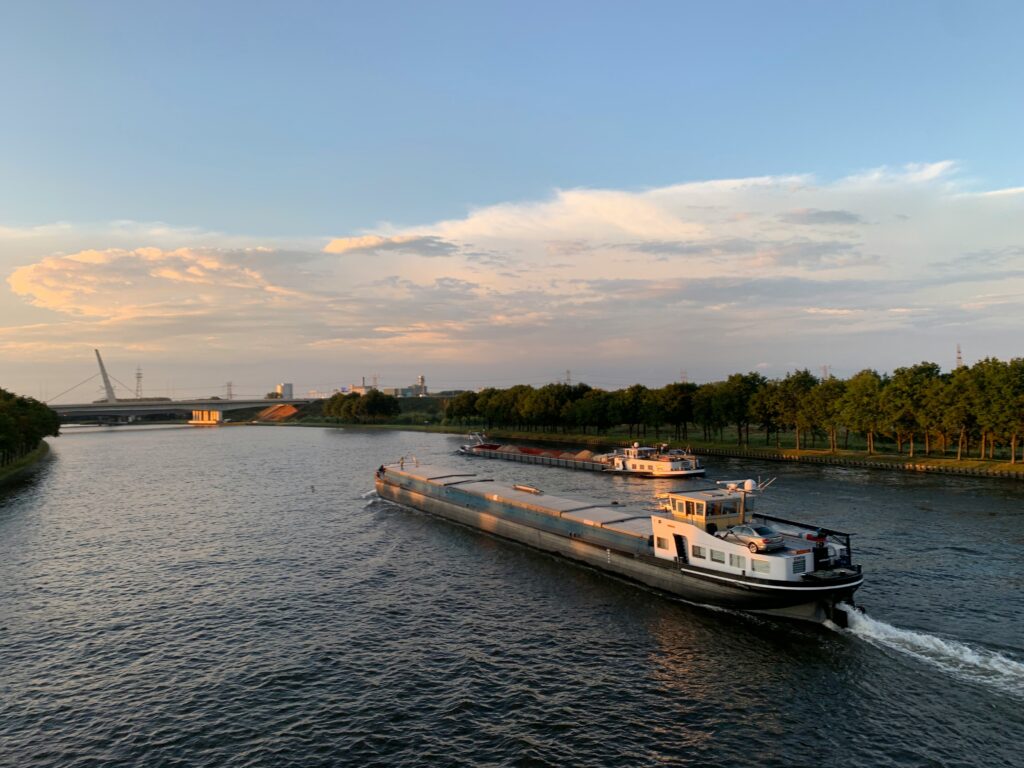Imagine a fuel barge gliding effortlessly across the water, operating quietly and efficiently. There’s no captain issuing commands or crew managing cumbersome hoses. Instead, sophisticated sensors monitor the environment, AI determines the safest path, and robotic arms facilitate fuel transfers. This concept is not a distant dream; the shipping and fuel delivery sector is already progressing in this direction.
While much of the global conversation about maritime automation focuses on cargo ships and cruise liners, the bunkering barge—the vessel responsible for supplying fuel to other ships—could be one of the first to fully embrace autonomy. Considering the nature of bunkering operations, this focus is entirely reasonable.
Reasons Fuel Barges Are Perfect for Autonomy
Transporting fuel over water involves inherent dangers. Teams manage flammable materials, complex transfer systems, and face risks from unpredictable weather and operational hazards. Removing personnel from these situations can significantly reduce risks.
Another crucial factor is operational efficiency. Crew salaries and associated costs can account for 40 to 50 percent of a ship’s total expenses. Simultaneously, human error is responsible for approximately 80 percent of maritime accidents. These statistics highlight genuine threats to the environment, the economy, and public safety. Technology is already demonstrating its value. What appears to be a technological advancement is, in fact, addressing real challenges where deploying a crewed vessel would be too perilous or costly.
The Workforce Challenge
The enthusiasm surrounding autonomy brings forth a challenging question: what will become of the individuals currently holding these positions? The maritime industry employs approximately 1.6 million seafarers globally. Many possess specialized skills developed over many years, skills that are not easily transferable to other sectors. Research indicates that over 80% of these workers are worried about job loss due to automation and artificial intelligence. Historical evidence supports these concerns. Although companies frequently assert that technology ‘reshapes’ jobs instead of eliminating them, automation typically results in a reduction of overall positions.
Indeed, new roles will emerge—such as shore-based control centers, remote monitoring, cybersecurity, and system maintenance—but these positions demand different skill sets. One operator may oversee several vessels, leading to a decrease in overall manpower. Technology is advancing faster than our training systems.’ The rapid pace of change may leave some professionals struggling to adapt, underscoring the necessity for proactive reskilling initiatives.
Technology and Its Constraints
Autonomous bunkering barges are advanced yet not without flaws. Cybersecurity threats pose significant risks. These vessels function as floating computers equipped with networks, sensors, and communication systems. Real dangers include hacking, GPS spoofing, and communication interference. A cyberattack on a fuel-filled barge could result in severe environmental and safety consequences, beyond mere data loss.
Unpredictable weather and environmental conditions are additional challenges. Skilled mariners can detect changes—a shift in wind, an increasing swell, a slight vibration—and respond swiftly. In contrast, automated systems depend on sensors and algorithms, which, despite their sophistication, lack the intuition of a human.
Regulatory frameworks are evolving but remain ambiguous. The International Maritime Organization (IMO) is in the process of creating its MASS Code to regulate Maritime Autonomous Surface Ships, anticipated by 2025, but full implementation will require time. Each flag state, port authority, and insurer may have distinct requirements, resulting in a complicated regulatory environment.
Economic and Market Consequences
The financial rationale for autonomy is compelling yet complex. Cutting crew expenses could reduce operating costs by approximately 5–7%. Nevertheless, the construction and upkeep of an autonomous barge demand significant capital investment. Software, sensors, remote-control systems, and cybersecurity measures contribute to both initial and ongoing expenses.
Larger bunkering firms may view this investment as beneficial, enabling them to enhance efficiency and safety. Conversely, smaller operators might find it challenging to compete, leading to consolidation within the industry. A further crucial issue is insurance and liability. If an autonomous barge is involved in a spill or accident, who bears the responsibility? The vessel owner? The software developer? The remote operator? Until these questions are resolved, insurers are likely to adopt a cautious approach to policy pricing, which could affect profitability.
Environmental Considerations
The advent of autonomous technology has the potential to offer substantial environmental advantages. By eliminating the need for crew accommodations and associated utilities, barges can become lighter and more energy-efficient. Enhanced routing and automation may lead to a decrease in emissions and fuel usage.
Nevertheless, risks persist. In the absence of a human crew, minor issues—such as a small leak or a loose connection—might go unnoticed until they develop into larger problems. With the introduction of new fuel types like LNG and methanol, autonomous systems will need to manage increasingly complex operations.
Looking Ahead
Despite the obstacles, the momentum is unmistakable. Early adopters such as Norway and the UK are experimenting with autonomous vessels, collecting real-world data on operations, safety, and regulatory frameworks.
The implementation is expected to commence under controlled conditions—such as industrial ports, fixed routes, and predictable weather patterns. As systems demonstrate their reliability, they will extend into more intricate and challenging environments.
Training is also evolving. Simulation-based programs are equipping workers for remote and automated positions. International organizations like the MASS Training Standards working group are establishing competencies for the upcoming generation of maritime professionals.
The Final Word
Autonomous bunkering barges signify more than just a technological advancement—they embody a transformation in the maritime industry’s approach to safety, efficiency, and the nature of work itself. They hold the promise of reducing costs, enhancing safety, and decreasing emissions, while simultaneously raising concerns about employment, liability, and risk.
For those within the maritime sector, the message is clear: change is approaching rapidly. Those who adapt, learn, and embrace technological advancements will spearhead this new era, while those who resist may find themselves left behind. The fuel of the future won’t just power ships—it will reshape an industry. And the barges delivering it may do so without a single hand on deck.
– Sakshi Pandey


